Categories
About Things to do in in Bangkok
Q.1 What is Bangkok Best Known for?
Bangkok is best known for its vibrant street life, grand temples like Wat Arun and Wat Phra Kaew, and delicious Thai street food. It's also famous for bustling markets, rooftop bars, and the Chao Phraya River cruises. Don’t forget the shopping - from luxury malls to night bazaars and the unforgettable Thai massage experience.
Q.2 When is the Best Time to Visit Bangkok?
The best time to visit Bangkok is during the cooler, dry season from November to February. During these months, the weather is more comfortable, with less humidity and pleasant temperatures, making it ideal for sightseeing and outdoor activities. This period is also the peak tourist season, so expect more crowds and higher prices.
Avoid April if you don’t like extreme heat, unless you’re coming for the Songkran water festival!
If you prefer fewer tourists and lower costs, the shoulder seasons (late November to early December or May to June) can also be good options, though it may be hotter or rainier. The rainy season (July to October) sees fewer visitors and lower prices, but you should be prepared for frequent showers
Q.3 Where is the Best Location for Tourists to Stay in Bangkok?
For tourists, popular and convenient areas to stay in Bangkok include:
Sukhumvit: Known for its modern hotels, shopping malls, and lively nightlife, with excellent BTS Skytrain access.
Riverside: Offers a more luxurious and scenic experience with upscale hotels and views of the Chao Phraya River, often with boat access to major attractions.
Siam: Ideal for shoppers, with numerous large malls and central access to public transport.
Khao San Road/Banglamphu: Popular with backpackers and budget travelers, offering a lively atmosphere and proximity to historical sites.
Silom: Known for business, nightlife, and proximity to Lumpini Park.
Q.4 What Top Attractions Are a Must-See in Bangkok?
Top must-see attractions in Bangkok include:
Q.5 What Are the Best Day Trips and Excursions from Bangkok?
Some of the best day trips from Bangkok include:
Ayutthaya – explore ancient ruins just 1.5 hours away
Damnoen Saduak Floating Market – for a classic boat market experience
Maeklong Railway Market – a market that folds up as trains pass through
Erawan National Park – hike and swim in turquoise waterfalls
Kanchanaburi – visit the Death Railway and River Kwai Bridge
Pattaya: A popular coastal city known for its beaches and nightlife (though often a longer day trip or overnight stay).
Q.6 What Top Attractions Are a Must-See in Bangkok?
Top must-see attractions in Bangkok include:
The Grand Palace and Wat Phra Kaew: Historic royal complex and the spiritual heart of Thailand.
Wat Arun (Temple of Dawn): Iconic riverside temple with stunning views.
Wat Pho (Temple of the Reclining Buddha): Home to a massive reclining Buddha and traditional Thai massage school.
Chatuchak Weekend Market: One of the world’s largest markets, perfect for shopping and street food.
Jim Thompson House: Museum showcasing traditional Thai architecture and silk industry history.
Khao San Road: Famous for nightlife, street food, and backpacker culture.
Chinatown (Yaowarat): Renowned for its vibrant street food and gold shops.
Lumphini Park: Green oasis for relaxation and outdoor activities.
The Golden Mount (Wat Saket): Offers panoramic city views after a scenic climb
Q.7 What are the best tours to do in Bangkok with kids?
The best tours and activities in Bangkok with kids often involve interactive experiences and animal encounters.
Some top choices include:
Safari World Bangkok: A large open zoo with drive-through safari and marine park shows.
SEA LIFE Bangkok Ocean World: Southeast Asia's largest aquarium, located under Siam Paragon mall, with impressive tunnels and diverse marine life.
KidZania Bangkok: An indoor edutainment city where kids can role-play various professions.
Dream World Bangkok: A theme park with a mix of thrilling rides and family-friendly attractions.
Pororo Aquapark Bangkok: A rooftop waterpark for cooling off and having fun.
Chao Phraya River Express Boat or Dinner Cruise: A scenic way to see the city from the water, especially enjoyable for kids at night with illuminated temples.
Tuk-tuk tours: A fun and exciting way to navigate the city, especially for short distances.
Floating Markets (like Damnoen Saduak or Amphawa): A unique cultural experience with boat rides and local snacks.
Bangkok Science Museum: A hands-on, interactive museum that makes science fun for younger visitors.
Art in Paradise: A 3D art gallery where families can take creative photos.
Q.8 What are the most popular museums and exhibitions in Bangkok?
Top museums and exhibitions in Bangkok include:
Bangkok National Museum – the largest museum in Southeast Asia, with royal artifacts and Thai history.
Museum of Siam – interactive exhibits that make learning Thai culture fun and modern.
Jim Thompson House – a mix of traditional Thai architecture and silk history.
Children’s Discovery Museum – perfect for young kids with hands-on science and art exhibits.
Art in Paradise (3D Museum) – a quirky, interactive space for fun photos and illusions.
Museum of Contemporary Art (MOCA Bangkok): Features a comprehensive collection of modern and contemporary Thai paintings and sculptures.
Erawan Museum: Known for its enormous three-headed elephant statue and magnificent interior with religious displays.
Madame Tussauds Bangkok: A popular wax museum with celebrity figures for fun photo opportunities.
Q.9 What are the recommended family-friendly activities in Bangkok?
Q.10 What should visitors know about touring the Grand Palace in Bangkok?
When touring the Grand Palace in Bangkok, visitors should be aware of several key points:
Dress Code: This is crucial. Visitors must dress respectfully. This means shoulders and knees must be covered for both men and women. No sleeveless shirts, vests, short shorts, hot pants, torn pants, tight pants, mini-skirts, or transparent clothing. Appropriate attire can often be rented or purchased near the entrance if needed.
Entry Fee: There is an admission fee for foreigners (currently around 500 baht), which usually includes access to Wat Phra Kaew (Temple of the Emerald Buddha) and sometimes other nearby museums.
Opening Hours: The Grand Palace is generally open from 8:30 AM to 3:30 PM daily, but it's always good to confirm closer to your visit.
Best Time to Visit: Arrive early in the morning, right at opening time, to avoid the worst of the heat and crowds. There's limited shade within the complex.
Hydration and Sun Protection: Bring plenty of water, a hat, and sunscreen, as it can get very hot and humid.
Scams: Be wary of touts outside the palace who might tell you it's closed or try to direct you to other attractions. Always go directly to the main entrance.
Time Commitment: Allow at least 2-3 hours to fully explore the vast complex.
Getting There: The most scenic way is often by Chao Phraya Express Boat to Tha Chang (N9) pier, a short walk away. MRT Sanam Chai Station is also a convenient option, followed by a short walk or bus ride.
Q.11 What are the public transportation options in Bangkok?
Bangkok offers many public transport options, including:
BTS Skytrain – fast, air-conditioned, and great for avoiding traffic.
MRT Subway – connects key areas and shopping hubs.
Tuk Tuks and taxis – good for short distances, but agree on the price or use a meter.
Chao Phraya Express Boats – perfect for sightseeing along the river.
Public buses – cheap but can be confusing for newcomers.
Airport Rail Link – connects Suvarnabhumi Airport to central Bangkok. For ease, tourists can buy a Rabbit Card (for BTS) or One-Day Passes.
Q.12 What are the best hotels in Bangkok?
Bangkok offers a wide range of hotels to suit every budget and preference. Some of the best and highly-rated options include:
Luxury (5-star and above):
Four Seasons Hotel Bangkok at Chao Phraya River: Known for its stunning riverside location and impeccable service.
The Peninsula Bangkok: Offers luxurious rooms with river views and excellent facilities.
Mandarin Oriental, Bangkok: A historic and iconic hotel on the river, famous for its elegance and service.
Waldorf Astoria Bangkok: A modern luxury hotel in a prime city center location.
Eastin Grand Hotel Phayathai: A newer option with direct Skytrain access and excellent reviews.
Grande Centre Point Surawong Bangkok: Highly rated for cleanliness, service, and design.
Mid-Range (3-4 star):
Grande Centre Point Hotel Terminal21: Conveniently located above a popular shopping mall and BTS station.
Chatrium Hotel Riverside Bangkok: Offers great value with spacious rooms and river views.
Novotel Bangkok on Siam Square: Central location, ideal for shopping and easy access to public transport.
Ambassador Hotel Bangkok - SHA Extra Plus: A large, well-located hotel in Sukhumvit.
Budget/Hostels:
PLOY Hostel (Khao San): A popular budget option near the backpacker hub.
Capital O 75451 Podstel Hostel Bangkok (Ratchada): Well-reviewed for its value.
Q.13 What are the best nightlife spots in Bangkok?
Khao San Road: Famous for backpacker bars, street parties, and a lively international crowd.
Sukhumvit (especially Soi 11 and Thonglor): Home to trendy clubs, rooftop bars, and cocktail lounges.
Silom: Known for Patpong Night Market, go-go bars, and vibrant LGBTQ+ venues.
Rooftop bars: Vertigo and Moon Bar at Banyan Tree, Sky Bar at Lebua State Tower, and Octave Rooftop
Lounge at Marriott Sukhumvit are popular for stunning city views.
Chinatown (Yaowarat): Offers a unique night market experience with street food and hidden bars.
Q.14 What are the preferred payment methods in Bangkok?
For tourists in Bangkok, a combination of cash and cards is generally preferred, with cash still being dominant for many everyday transactions.
Q.15 What are the transit procedures at Suvarnabhumi Airport?
Bangkok is best known for its vibrant street life, grand temples like Wat Arun and Wat Phra Kaew, and delicious Thai street food. It's also famous for bustling markets, rooftop bars, and the Chao Phraya River cruises. Don’t forget the shopping - from luxury malls to night bazaars and the unforgettable Thai massage experience.
Q.2 When is the Best Time to Visit Bangkok?
The best time to visit Bangkok is during the cooler, dry season from November to February. During these months, the weather is more comfortable, with less humidity and pleasant temperatures, making it ideal for sightseeing and outdoor activities. This period is also the peak tourist season, so expect more crowds and higher prices.
Avoid April if you don’t like extreme heat, unless you’re coming for the Songkran water festival!
If you prefer fewer tourists and lower costs, the shoulder seasons (late November to early December or May to June) can also be good options, though it may be hotter or rainier. The rainy season (July to October) sees fewer visitors and lower prices, but you should be prepared for frequent showers
Q.3 Where is the Best Location for Tourists to Stay in Bangkok?
For tourists, popular and convenient areas to stay in Bangkok include:
Sukhumvit: Known for its modern hotels, shopping malls, and lively nightlife, with excellent BTS Skytrain access.
Riverside: Offers a more luxurious and scenic experience with upscale hotels and views of the Chao Phraya River, often with boat access to major attractions.
Siam: Ideal for shoppers, with numerous large malls and central access to public transport.
Khao San Road/Banglamphu: Popular with backpackers and budget travelers, offering a lively atmosphere and proximity to historical sites.
Silom: Known for business, nightlife, and proximity to Lumpini Park.
Q.4 What Top Attractions Are a Must-See in Bangkok?
Top must-see attractions in Bangkok include:
- The Grand Palace and Wat Phra Kaew: Historic royal complex and the spiritual heart of Thailand.
- Wat Arun (Temple of Dawn): Iconic riverside temple with stunning views.
- Wat Pho (Temple of the Reclining Buddha): Home to a massive reclining Buddha and traditional Thai massage school.
- Chatuchak Weekend Market: One of the world’s largest markets, perfect for shopping and street food.
- Jim Thompson House: Museum showcasing traditional Thai architecture and silk industry history.
- Khao San Road: Famous for nightlife, street food, and backpacker culture.
- Chinatown (Yaowarat): Renowned for its vibrant street food and gold shops.
- Lumphini Park: Green oasis for relaxation and outdoor activities.
- The Golden Mount (Wat Saket): Offers panoramic city views after a scenic climb
Q.5 What Are the Best Day Trips and Excursions from Bangkok?
Some of the best day trips from Bangkok include:
Ayutthaya – explore ancient ruins just 1.5 hours away
Damnoen Saduak Floating Market – for a classic boat market experience
Maeklong Railway Market – a market that folds up as trains pass through
Erawan National Park – hike and swim in turquoise waterfalls
Kanchanaburi – visit the Death Railway and River Kwai Bridge
Pattaya: A popular coastal city known for its beaches and nightlife (though often a longer day trip or overnight stay).
Q.6 What Top Attractions Are a Must-See in Bangkok?
Top must-see attractions in Bangkok include:
The Grand Palace and Wat Phra Kaew: Historic royal complex and the spiritual heart of Thailand.
Wat Arun (Temple of Dawn): Iconic riverside temple with stunning views.
Wat Pho (Temple of the Reclining Buddha): Home to a massive reclining Buddha and traditional Thai massage school.
Chatuchak Weekend Market: One of the world’s largest markets, perfect for shopping and street food.
Jim Thompson House: Museum showcasing traditional Thai architecture and silk industry history.
Khao San Road: Famous for nightlife, street food, and backpacker culture.
Chinatown (Yaowarat): Renowned for its vibrant street food and gold shops.
Lumphini Park: Green oasis for relaxation and outdoor activities.
The Golden Mount (Wat Saket): Offers panoramic city views after a scenic climb
Q.7 What are the best tours to do in Bangkok with kids?
The best tours and activities in Bangkok with kids often involve interactive experiences and animal encounters.
Some top choices include:
Safari World Bangkok: A large open zoo with drive-through safari and marine park shows.
SEA LIFE Bangkok Ocean World: Southeast Asia's largest aquarium, located under Siam Paragon mall, with impressive tunnels and diverse marine life.
KidZania Bangkok: An indoor edutainment city where kids can role-play various professions.
Dream World Bangkok: A theme park with a mix of thrilling rides and family-friendly attractions.
Pororo Aquapark Bangkok: A rooftop waterpark for cooling off and having fun.
Chao Phraya River Express Boat or Dinner Cruise: A scenic way to see the city from the water, especially enjoyable for kids at night with illuminated temples.
Tuk-tuk tours: A fun and exciting way to navigate the city, especially for short distances.
Floating Markets (like Damnoen Saduak or Amphawa): A unique cultural experience with boat rides and local snacks.
Bangkok Science Museum: A hands-on, interactive museum that makes science fun for younger visitors.
Art in Paradise: A 3D art gallery where families can take creative photos.
Q.8 What are the most popular museums and exhibitions in Bangkok?
Top museums and exhibitions in Bangkok include:
Bangkok National Museum – the largest museum in Southeast Asia, with royal artifacts and Thai history.
Museum of Siam – interactive exhibits that make learning Thai culture fun and modern.
Jim Thompson House – a mix of traditional Thai architecture and silk history.
Children’s Discovery Museum – perfect for young kids with hands-on science and art exhibits.
Art in Paradise (3D Museum) – a quirky, interactive space for fun photos and illusions.
Museum of Contemporary Art (MOCA Bangkok): Features a comprehensive collection of modern and contemporary Thai paintings and sculptures.
Erawan Museum: Known for its enormous three-headed elephant statue and magnificent interior with religious displays.
Madame Tussauds Bangkok: A popular wax museum with celebrity figures for fun photo opportunities.
Q.9 What are the recommended family-friendly activities in Bangkok?
- Family-friendly activities in Bangkok include:
- Visiting Lumphini Park for paddle boating and playgrounds.
- Exploring Dusit Zoo or Safari World with animals and kid zones.
- Taking a Tuk Tuk ride or river boat for a fun local experience.
- Enjoying the KidZania indoor city at Siam Paragon for role-play fun.
- Watching a cultural show like Siam Niramit, which is both educational and entertaining.
- Visiting select temples: While avoiding "temple fatigue," kids might enjoy the impressive scale of Wat Pho (Reclining Buddha) and the riverside setting of Wat Arun (Temple of Dawn), often accessible by boat, which is an adventure in itself.
- Shopping mall experiences: Bangkok's mega-malls like Siam Paragon often have dedicated kids' zones, cinemas, and attractions like SEA LIFE Bangkok Ocean World.
- Trying local street food: A culinary adventure that can be exciting for adventurous eaters.
- Taking a klong (canal) boat ride: Offers a glimpse into a different side of Bangkok away from the bustling main roads.
- Interactive art museums: Like Art in Paradise, where 3D artworks create fun photo opportunities.
Q.10 What should visitors know about touring the Grand Palace in Bangkok?
When touring the Grand Palace in Bangkok, visitors should be aware of several key points:
Dress Code: This is crucial. Visitors must dress respectfully. This means shoulders and knees must be covered for both men and women. No sleeveless shirts, vests, short shorts, hot pants, torn pants, tight pants, mini-skirts, or transparent clothing. Appropriate attire can often be rented or purchased near the entrance if needed.
Entry Fee: There is an admission fee for foreigners (currently around 500 baht), which usually includes access to Wat Phra Kaew (Temple of the Emerald Buddha) and sometimes other nearby museums.
Opening Hours: The Grand Palace is generally open from 8:30 AM to 3:30 PM daily, but it's always good to confirm closer to your visit.
Best Time to Visit: Arrive early in the morning, right at opening time, to avoid the worst of the heat and crowds. There's limited shade within the complex.
Hydration and Sun Protection: Bring plenty of water, a hat, and sunscreen, as it can get very hot and humid.
Scams: Be wary of touts outside the palace who might tell you it's closed or try to direct you to other attractions. Always go directly to the main entrance.
Time Commitment: Allow at least 2-3 hours to fully explore the vast complex.
Getting There: The most scenic way is often by Chao Phraya Express Boat to Tha Chang (N9) pier, a short walk away. MRT Sanam Chai Station is also a convenient option, followed by a short walk or bus ride.
Q.11 What are the public transportation options in Bangkok?
Bangkok offers many public transport options, including:
BTS Skytrain – fast, air-conditioned, and great for avoiding traffic.
MRT Subway – connects key areas and shopping hubs.
Tuk Tuks and taxis – good for short distances, but agree on the price or use a meter.
Chao Phraya Express Boats – perfect for sightseeing along the river.
Public buses – cheap but can be confusing for newcomers.
Airport Rail Link – connects Suvarnabhumi Airport to central Bangkok. For ease, tourists can buy a Rabbit Card (for BTS) or One-Day Passes.
Q.12 What are the best hotels in Bangkok?
Bangkok offers a wide range of hotels to suit every budget and preference. Some of the best and highly-rated options include:
Luxury (5-star and above):
Four Seasons Hotel Bangkok at Chao Phraya River: Known for its stunning riverside location and impeccable service.
The Peninsula Bangkok: Offers luxurious rooms with river views and excellent facilities.
Mandarin Oriental, Bangkok: A historic and iconic hotel on the river, famous for its elegance and service.
Waldorf Astoria Bangkok: A modern luxury hotel in a prime city center location.
Eastin Grand Hotel Phayathai: A newer option with direct Skytrain access and excellent reviews.
Grande Centre Point Surawong Bangkok: Highly rated for cleanliness, service, and design.
Mid-Range (3-4 star):
Grande Centre Point Hotel Terminal21: Conveniently located above a popular shopping mall and BTS station.
Chatrium Hotel Riverside Bangkok: Offers great value with spacious rooms and river views.
Novotel Bangkok on Siam Square: Central location, ideal for shopping and easy access to public transport.
Ambassador Hotel Bangkok - SHA Extra Plus: A large, well-located hotel in Sukhumvit.
Budget/Hostels:
PLOY Hostel (Khao San): A popular budget option near the backpacker hub.
Capital O 75451 Podstel Hostel Bangkok (Ratchada): Well-reviewed for its value.
Q.13 What are the best nightlife spots in Bangkok?
Khao San Road: Famous for backpacker bars, street parties, and a lively international crowd.
Sukhumvit (especially Soi 11 and Thonglor): Home to trendy clubs, rooftop bars, and cocktail lounges.
Silom: Known for Patpong Night Market, go-go bars, and vibrant LGBTQ+ venues.
Rooftop bars: Vertigo and Moon Bar at Banyan Tree, Sky Bar at Lebua State Tower, and Octave Rooftop
Lounge at Marriott Sukhumvit are popular for stunning city views.
Chinatown (Yaowarat): Offers a unique night market experience with street food and hidden bars.
Q.14 What are the preferred payment methods in Bangkok?
For tourists in Bangkok, a combination of cash and cards is generally preferred, with cash still being dominant for many everyday transactions.
- Cash (Thai Baht - THB):
- Essential for: Street food vendors, local markets, small shops, tuk-tuks, and smaller local restaurants.
- ATMs: Widely available, but most Thai banks charge a fee (typically 150-220 THB) per withdrawal for foreign cards. It's advisable to withdraw larger sums to minimize fees.
- Currency Exchange: You'll find numerous currency exchange booths, especially in tourist areas and shopping malls, often offering competitive rates (e.g., SuperRich).
- Credit/Debit Cards (Visa, MasterCard):
- Widely accepted at: Hotels, major shopping malls, larger supermarkets, upscale restaurants, and many international chain stores.
- Transaction Fees: Check with your bank about international transaction fees and currency conversion rates. Always choose to be charged in Thai Baht (THB), not your home currency, to avoid unfavorable dynamic currency conversion rates.
- Contactless Payments: Becoming more common, but always ask if a store accepts them.
- Digital/Mobile Payments (PromptPay, e-wallets):
- PromptPay: This QR code-based system is very popular among Thais, even at small vendors. However, it typically requires a Thai bank account. Some international e-wallets or special tourist-focused apps (like TAGTHAi Easy Pay, which links to a prepaid card) are emerging to allow tourists to use PromptPay QR codes.
- Ride-Hailing Apps (Grab, Bolt): These apps allow cashless payment linked to your card, which is convenient for taxis and food delivery.
- Recommendation: Always carry a good amount of Thai Baht in small denominations for daily expenses, street food, and local transport. Use your credit/debit card for larger purchases at established businesses.
Q.15 What are the transit procedures at Suvarnabhumi Airport?
- At Suvarnabhumi Airport, transit procedures are smooth and well-marked:
- For international connections, follow “Transfer Passengers” signs right after landing.
- You’ll go through security screening again even if you’re not entering Thailand.
- Boarding gates for connecting flights are assigned after transfer check.
- If your bags are checked through, there’s no need to collect them.
- Minimum layover time for international-to-international transfer is at least 1.5 to 2 hours.







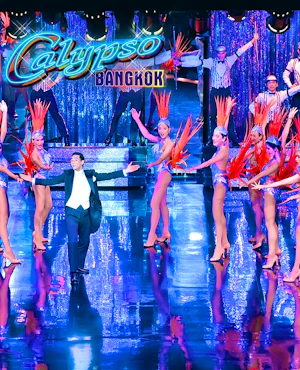












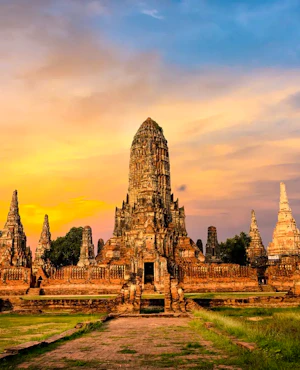
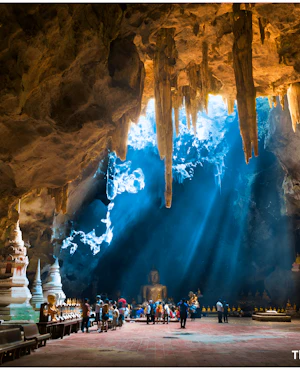


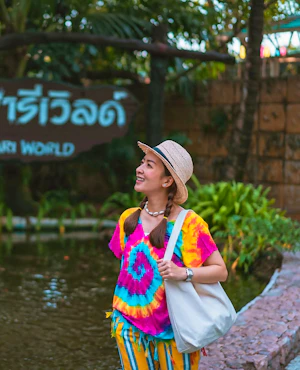



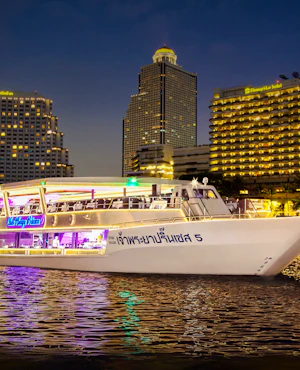
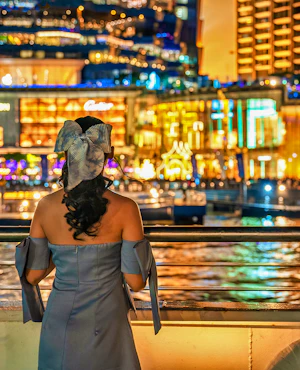








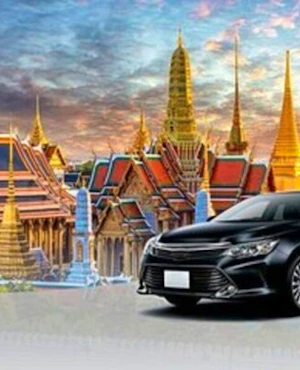
 Tours
Tours Tickets
Tickets Aerial Sightseeing
Aerial Sightseeing





















 Trustpilot
Trustpilot in Dubai
in Dubai